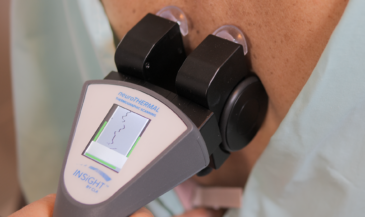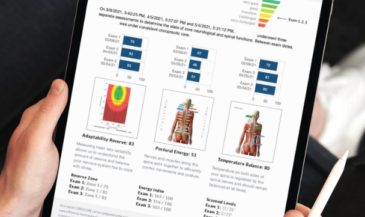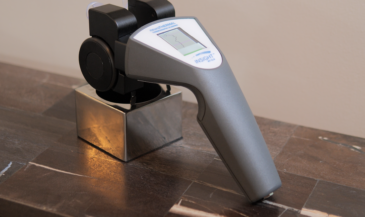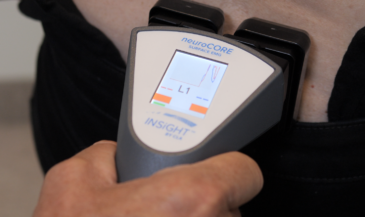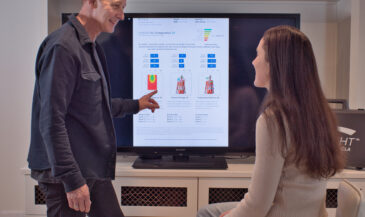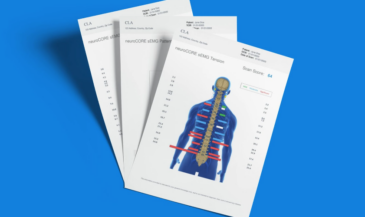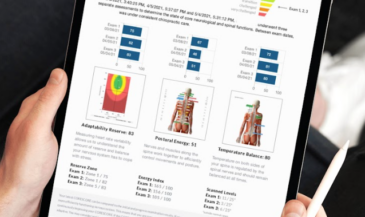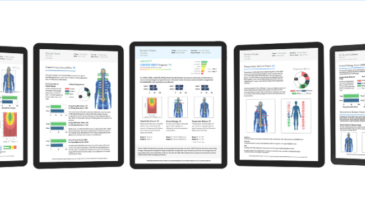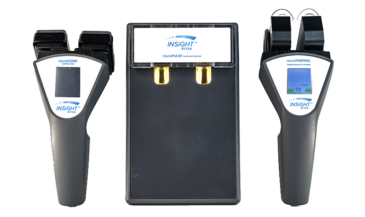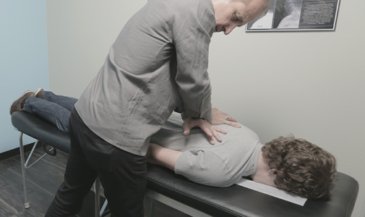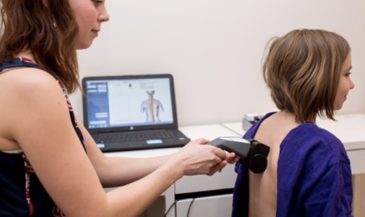If you’ve been practicing chiropractic for a while, chances are you’ve relied heavily on X-rays to guide your treatment.
You’re not alone.
A lot of chiropractors out there still swear by traditional X-rays as their main diagnostic tool. After all, X-rays have been used for over a century, giving us a clear picture of spinal misalignments.
But here’s the deal.
X-rays show structure, not function.
And if you’re only looking at structure, you’re missing the bigger picture of what’s really happening with your patients’ nervous system—the system that actually controls every movement, sensation, and bodily function.
This article is going to lay out why it’s time to move beyond just X-rays and start incorporating neuroscience and nervous system scanning into your practice. Whether you’re skeptical or just resistant to change, I’ll show you how these tools can enhance what you already do, without throwing out your trusty X-ray machine.
Why Relying Solely on X-Rays Is Limiting Your Practice
Here’s the truth.
Relying only on X-rays is like using a hammer when what you really need is a full toolbox.
X-rays show bones and pathology, but they don’t tell you anything about nerve function or how the nervous system is coping with stress.
And isn’t that what chiropractic care is all about?
We’re working with the nervous system, not just bones.
If your focus is purely on spinal misalignments as seen on X-rays, you’re only addressing part of the problem. The real magic happens when you can see how those misalignments are affecting the nervous system—and that’s where nervous system scans come in.
What Traditional X-Rays Don’t Tell You About the Nervous System
What is the problem with X-rays? Well, they show you the bones, but they completely miss what’s going on with the nerves.
And let’s be honest, misalignments are only part of the puzzle. It’s the nervous system that’s running the show. Misaligned vertebrae are a problem because they disrupt the nervous system, not just because they’re out of place.
But X-rays don’t show you that.
They don’t tell you if the nervous system is firing properly, or if it’s under stress. They don’t reveal how well your patient’s central nervous system is regulating the body. And without that information, you’re basically working with incomplete data.
Why Neuroscience Matters in Chiropractic Care
Chiropractic is about so much more than bones. At its core, chiropractic care is all about the nervous system.
Think about it! Your adjustments aren’t just about moving bones. They’re about restoring communication between the brain and the body. The nervous system runs the show, and when there’s interference, the whole body suffers.
This is why neuroscience is so important to our profession.
It’s the study of how the nervous system works and how it influences health. By understanding neuroscience, you can provide more comprehensive care to your patients—care that goes beyond just fixing misalignments and addresses the real source of the problem.
How Nervous System Scans Complement X-Rays
I’m not telling you to throw out your X-ray machine.
It still has its place, especially when it comes to diagnosing structural issues. But nervous system scans give you the missing piece of the puzzle—how those structural issues are affecting the function of the nervous system.
With tools like EMG scans, neurothermal scans, and heart rate variability (HRV) tests, you can see what the X-ray doesn’t show. You can measure how the nerves are firing, where there’s stress or inflammation, and how the body is responding to care.
This means you’re not just guessing. You’re using objective data to guide your adjustments, making them more precise and effective.
Isn’t Chiropractic About the Nervous System?
Chiropractic care has always been about the nervous system. When D.D. Palmer founded chiropractic, it wasn’t about cracking bones. It was about releasing interference in the nervous system so the body could heal itself.
But somewhere along the way, the focus shifted. We got stuck on X-rays and spinal misalignments, forgetting that the real reason those misalignments matter is because they interfere with the nervous system.
It’s time to get back to our roots. Incorporating nervous system scans helps us return to the core principle of chiropractic: restoring nervous system function.
Here’s where nervous system scans really shine.
They give you a clear picture of how your patient’s nervous system is functioning. Whether it’s an EMG scan showing muscle activity or a neurothermal scan tracking temperature changes along the spinal cord, these scans provide objective data on nervous system function.
And when you have that data, you can:
- Make more precise adjustments
- Track how well your patient’s nervous system is responding to care
- Show your patients the progress they’re making in a way that’s easy to understand
Instead of relying on subjective reports of pain, you can show them hard data that proves your care is working.
That’s a game changer!
How to Get Started with Nervous System Scans Without Ditching X-Rays
It doesn’t mean throwing out your X-ray machine or changing your practice overnight. It’s about adding another layer of insight into your care.
Start by looking into nervous system scanning technology, like the INSiGHT system. This tool integrates EMG, neurothermal, and HRV scanning into one platform, giving you a full picture of your patient’s nervous system.
Here’s why this works:
- You can still use X-rays to check for structural issues.
- Nervous system scans give you the functional data you need to guide your care.
- Combining both approaches gives you a more comprehensive view of your patient’s health, leading to better results.
Discover the Future of Chiropractic Care
Are you ready to revolutionize your practice and provide unparalleled patient care? Integrate INSiGHT scanning technology and experience the difference it makes.
Book a call with an INSiGHT Advisor today to learn how you can bring this transformative technology into your chiropractic clinic so you can lead your patients on a journey toward optimal health and wellness.









